Introduction
Agile methodologies have revolutionized the way organizations approach project management and software development. However, achieving Agile maturity requires more than just adopting these practices. It involves a comprehensive understanding of the framework, continuous improvement, and awareness of the broader technological and business context.
In this article, we will explore the concept of Agile maturity, the key focus areas of Agile maturity assessment, elements of Agile maturity assessment, Agile maturity assessment models, how to conduct an assessment, best practices for assessments, benefits of Agile maturity assessments, common Agile maturity models, and implementing continuous improvement. By delving into these topics, we will uncover the strategies and insights necessary for organizations to enhance their agility and thrive in today's dynamic marketplace.
Understanding Agile Maturity Levels
The idea of advancement entails acknowledging the expertise attained by a company in the adoption and implementation of techniques. This comprehension is crucial for assessing a company's present flexible methodologies and to identify areas for improvement. The levels of growth in agility are defined by how effectively an organization has incorporated principles of flexibility into their operations, and how well they can adapt to changes while consistently delivering value.
TBC Bank's progression to flexibility exemplifies the shift from conventional, large-scale operations to a model that prioritizes adaptable delivery of value. With the goal of accelerating the time-to-market for its digital products, TBC Bank embodies the core principles of flexibility and adaptability in its mission to enhance customer and employee experiences, in accordance with the ever-evolving needs of the financial industry.
As flexible methodologies become increasingly adopted across various sectors, it is important to note the evolution from the previous 'waterfall' approach, characterized by extensive planning and systematic project delivery, to a more iterative and collaborative flexible approach. This change is emphasized by the principle that 'working software is the main indicator of progress,' concentrating on speedy iterations and close cooperation between developers and business executives.
Nevertheless, the implementation of a flexible project management approach is not without its difficulties. Recent industry developments highlight obstacles such as developer burnout, shifting work environments, and the rapid advancement of AI technologies. Despite these obstacles, the flexible approach remains a crucial strategy for organizations seeking to improve their responsiveness and competitiveness in today's dynamic marketplace.
The phases of rapid adoption often reflect distinct patterns that do not necessarily align with conventional models of innovation diffusion, such as the Rogers Innovation Diffusion Curve. Instead, these patterns reveal the importance of leadership, talent development, and the establishment of organizational capabilities that underpin Business Agility—the capacity of a business to adapt swiftly to market changes and leverage opportunities with agility and efficiency.
In summary, successfully navigating the levels of Agile development necessitates a thorough comprehension of the framework, a dedication to ongoing enhancement, and an understanding of the wider technological and business environment.
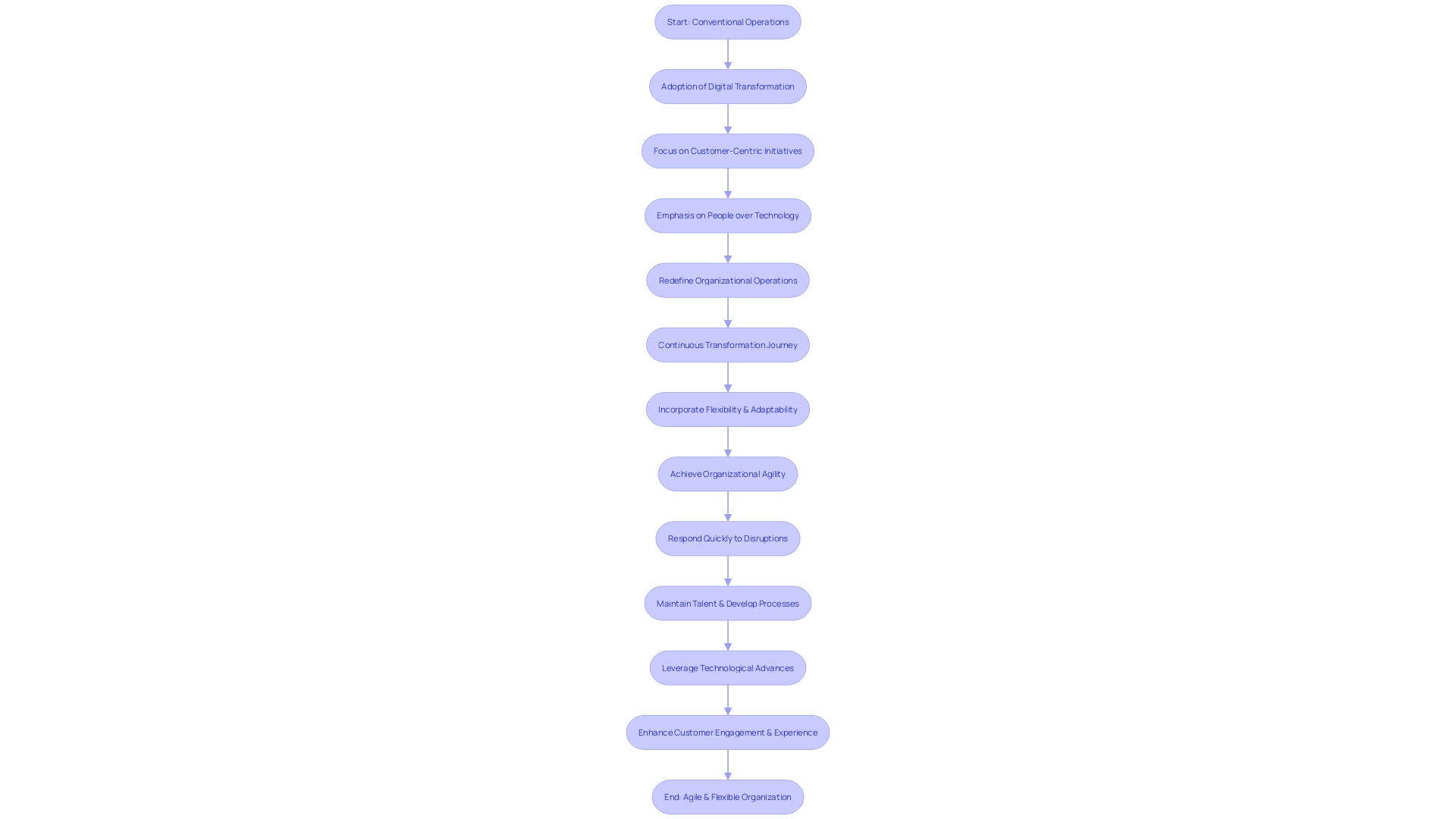
Key Focus Areas of Agile Maturity Assessment
Assessing your company's practices requires a deep comprehension of the specific areas that drive success. These areas are crucial for thoroughly evaluating your current level of agility and identifying where enhancements can be implemented. Grounded in extensive research, such as Gallup's Agile 8, which outlines eight key drivers of agility, assessments can begin with the Agility Index to identify growth opportunities. Moreover, the Business Agility Institute® defines 'Business Agility' as a set of organizational capabilities, behaviors, and ways of working that allow a business to adapt swiftly and efficiently to changes. This concept is further supported by Ewerton Santos, who emphasizes the importance of critical skills and leadership in fostering agility across an organization. Insights from a mixed-method study on performance metrics in dynamic software development suggest that while the use of metrics is vital, practical challenges often arise. Dealing with these challenges is vital for aligning Agile approaches with the ever-changing needs of the market and guaranteeing that your initiatives are both efficient and long-lasting.
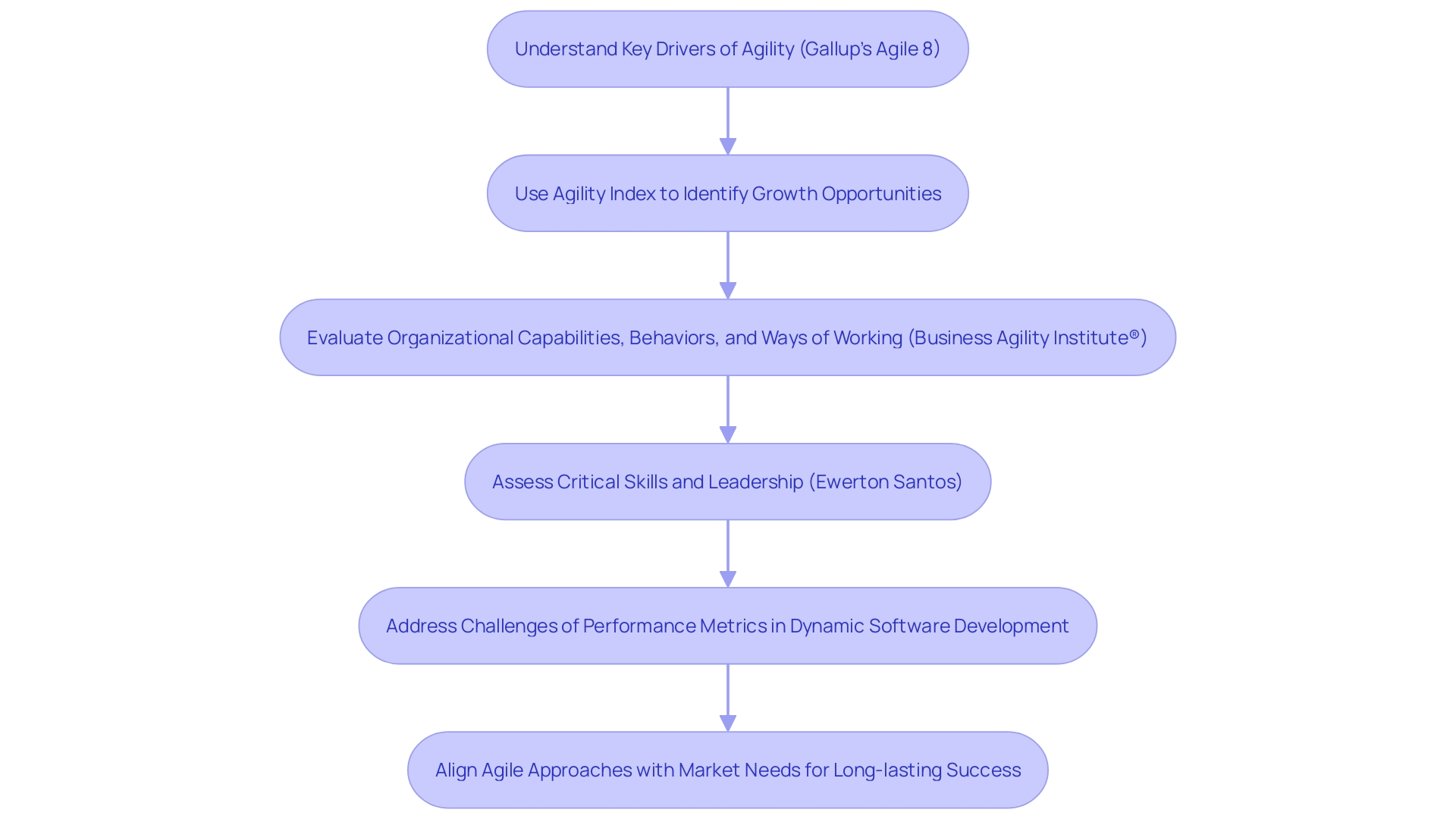
Elements of Agile Maturity Assessment
Assessing an organization's practices involves a comprehensive analysis of leadership, collaboration, process efficiency, and the ability to continuously improve. These components are essential for a maturity assessment focused on agility. For example, TBC Bank, a prominent financial institution in Georgia, demonstrates the transition of operations to a more adaptable and customer-focused strategy, in line with flexible principles. Agility, as defined by the Business Agility Institute®, encompasses organizational capabilities and behaviors that enable swift response to market changes. With notable figures like Ewerton Santos emphasizing the need for critical skills that promote organizational agility, it's clear that leadership and talent preparation are pivotal. Moreover, the adoption of a flexible approach often presents unique patterns not seen in other innovation adoptions, underscoring the importance of a tailored assessment. Gallup's Agile drivers of agility illustrate this, revealing factors influencing workers' perceptions of agility, which are essential for quick adaptation to business needs. These insights influence the comprehension of a company's development in today's ever-changing technology landscape.
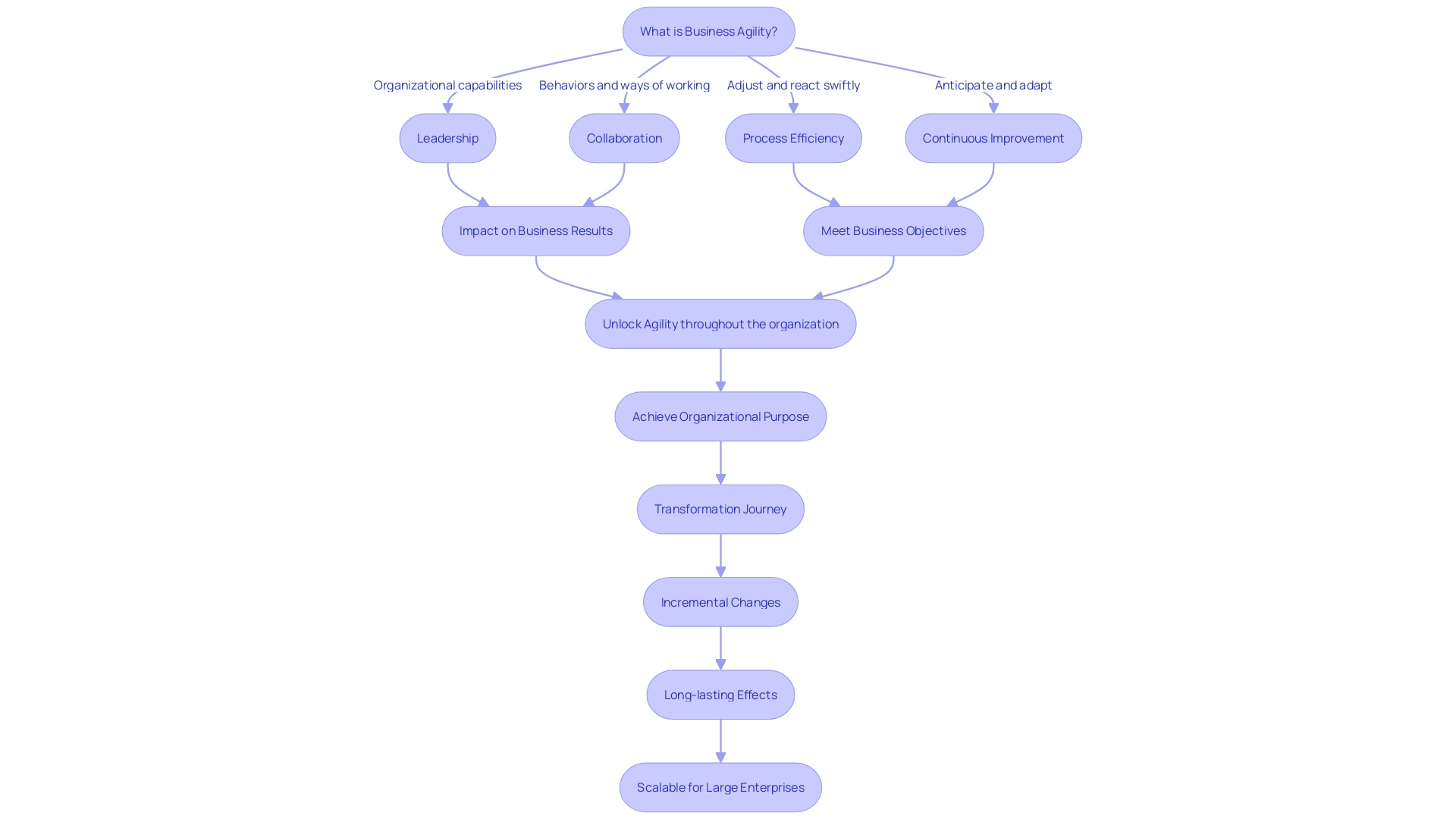
Agile Maturity Assessment Models
Maturity assessment models provide a roadmap for companies to refine their practices effectively. By using a set of criteria and indicators, these models enable the evaluation of an organization's current level of adoption, highlighting strengths and areas ready for improvement. For instance, some models draw upon the Rogers Innovation Diffusion Curve, a theory that elucidates the spread of innovations. This model classifies adopters and can be essential in comprehending the stages of incorporation within a company.
The methodology based on principles such as collaboration, adaptability, and iterative progress, has evolved since its conception in 2001. It contrasts starkly with the sequential 'waterfall' model, encouraging rapid iterations and valuing working software as the primary progress indicator. This is particularly relevant as the tech industry faces hurdles such as developer burnout and the integration of AI, demanding a sustainable work rhythm to prevent burnout and boreout.
Leading software organizations embed quality engineers within teams to maintain agility and uphold standards. This is in line with insights from 'Testing: A Practical Guide for Testers and Teams,' which highlights the importance of the 'Whole Team' approach for effective testing and quality assurance. Despite the widespread adoption of flexible project management methodologies, some teams still demonstrate isolated operations, highlighting the importance of cross-functional collaboration.
Statistics demonstrate that while there is a worldwide shortage of software developers, the sustainable pace of Agile's methodology aims to alleviate associated mental health concerns. The 15th edition of the World Quality Report highlights trends such as business assurance and agile quality management as vital components in the current landscape. Organizations are encouraged to collaborate with industry experts who can provide both strategic insights and practical experience to navigate the transformation journey.

How to Conduct an Agile Maturity Assessment
The evaluation of a company's expertise with flexible methodologies is essential for guaranteeing ongoing enhancement and the efficient delivery of value. This evaluation is not just a superficial look at team performance but a thorough analysis that covers various aspects of agility and advancement within the organization. To effectively evaluate the maturity of the approach, one must consider the organizational culture, the readiness to adapt to change, and the degree of collaboration between developers and business executives. This assessment typically involves collecting and scrutinizing data, followed by a thorough analysis of the findings to inform actionable improvement strategies.
Incorporating practices based on principles such as rapid iterations and embracing change, even at late stages, contrasts starkly with traditional 'waterfall' approaches. The focus on 'working software as the primary measure of progress' highlights the mentality of flexibility and adaptability. Nevertheless, in spite of its advantages, the methodologies based on Agility encounter difficulties, especially in bigger companies where the patterns of implementation may vary from those of smaller businesses. This complexity necessitates a nuanced assessment approach that takes into account the unique dynamics of each organization.
For example, TBC Bank's transformation to enhance its digital product time-to-market reflects the necessity for a customized maturity assessment. Organizations like Unleashed provide training and consulting services to enhance development and operations, emphasizing hands-on experience and mastery of industry best practices. These services are aimed at fostering business agility at every organizational level.
Drawing from research on team dynamics and productivity, such as the studies by Hackman and Vidmar, it becomes evident that the optimal team size plays a pivotal role in effectiveness. Understanding these dynamics is a critical component of the assessment process. When coupled with the Agile framework, which identifies key drivers of adaptability, an evaluation of Agile development can pinpoint areas for growth and advancement, thereby enabling organizations to respond swiftly to business needs while minimizing burnout and increasing overall job satisfaction among software developers.
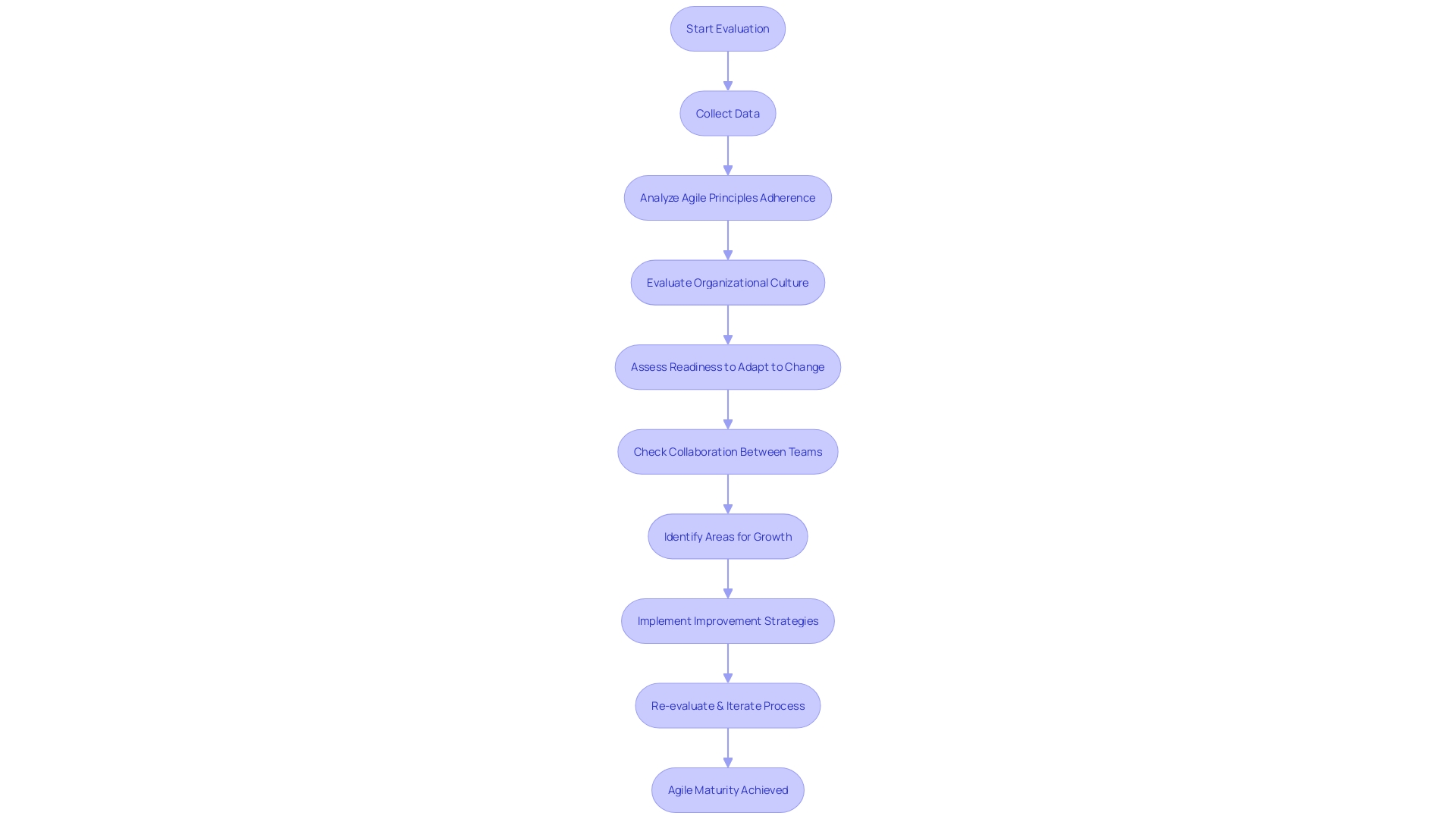
Best Practices for Agile Maturity Assessments
Executing maturity assessments effectively is pivotal to the transformation of organizations from rigid, large-scale operations to entities capable of flexible and continuous value delivery. A standardized approach to these assessments ensures consistency and comparability across different teams and projects. Inclusion of key stakeholders is critical, as it aligns the assessment with organizational goals and encourages buy-in from all levels of the business, as evidenced by the transformation of TBC Bank, which successfully improved its time-to-market for digital products by involving stakeholders in its agility journey.
Moreover, fostering a culture of continuous improvement is essential. For example, the RSMM framework emphasizes the significance of incorporating sustainable approaches for research software development to improve quality, reusability, and impact. This is similar to the principle of iterative improvement, as teams reflect on each sprint to refine their strategies.
Incorporating quality engineers within teams, as recommended by software industry best principles, results in a more integrated and collaborative approach to quality assurance. This all-encompassing philosophy, celebrated as the 'Whole Team' approach in 'Agile Testing: A Practical Guide for Testers and Agile Teams', has been acknowledged for more than two decades as a vital success factor in dynamic environments.
Recent policy reforms in the Army's software development processes demonstrate the shift towards contemporary, dynamic best approaches. These reforms aim to streamline lifecycle processes, making them less cumbersome and more responsive to change, demonstrating the application of adaptable principles at an institutional level.
In addition, Gallup's extensive research identifies eight drivers of agility, emphasizing the Agile8 as a means to harness growth opportunities. This underscores the significance of agility not just as a working method but as an experiential shift in organizational culture.
To conclude, the integration of these approaches not only enhances the reliability of Agile advancement assessments but also propels businesses towards a more responsive, innovative, and sustainable future in software development.
Benefits of Agile Maturity Assessments
Evaluations of agility maturity are crucial for companies aiming to enhance their methods and align them with overarching corporate goals. These evaluations serve as a compass, pinpointing the strong aspects of an organization's flexible methodologies and shedding light on areas ripe for enhancement. By methodically analyzing current practices, companies can discern which principles of agility are firmly rooted and which require further cultivation to foster a more responsive and efficient development environment.
Examples from industry leaders like TBC Bank and M&T Bank demonstrate the transformative power of maturity assessments in steering organizational change. TBC Bank, with its ethos of simplifying customer experiences, utilized these assessments to accelerate its digital product delivery, thereby enriching customer and employee interactions. Meanwhile, M& T Bank addressed the digital disruption in the banking industry by embracing Clean Code standards across its development teams, a step emphasized by principles of flexibility to guarantee software quality and compliance.
In the face of an evolving technology landscape, where the methodology focused on flexibility and adaptability confronts new challenges such as developer burnout and the integration of AI, it remains a steadfast beacon for progress. The emphasis on collaboration, flexibility, and iterative progress is in stark contrast to the traditional 'waterfall' approach, as the Agile methodology welcomes changes late in the project cycle and values working software as the primary progress indicator.
Research conducted by Gallup on statistics, acknowledging the Agile8 as crucial contributors to organizational agility, affirms the concept that the level of expertise in Agile goes beyond simple methodology; it influences the actual work experience. The Agility Index emerges as a tool for companies to leverage growth opportunities, indicating that assessments of adaptability and flexibility are not only about evaluating current practices, but also about establishing the foundation for sustainable and resilient business operations in the face of ongoing change.
Leaders in technology and innovation recognize that the adoption of flexible methodologies does not always follow a linear path. According to experienced professionals in the industry, the process of reaching a high level of agility is characterized by specific trends and phases of acceptance, which demonstrate the individual requirements and values of various organizations. The pursuit of maturity, therefore, is not a one-size-fits-all process but a tailored approach that aligns with specific business realities and goals.
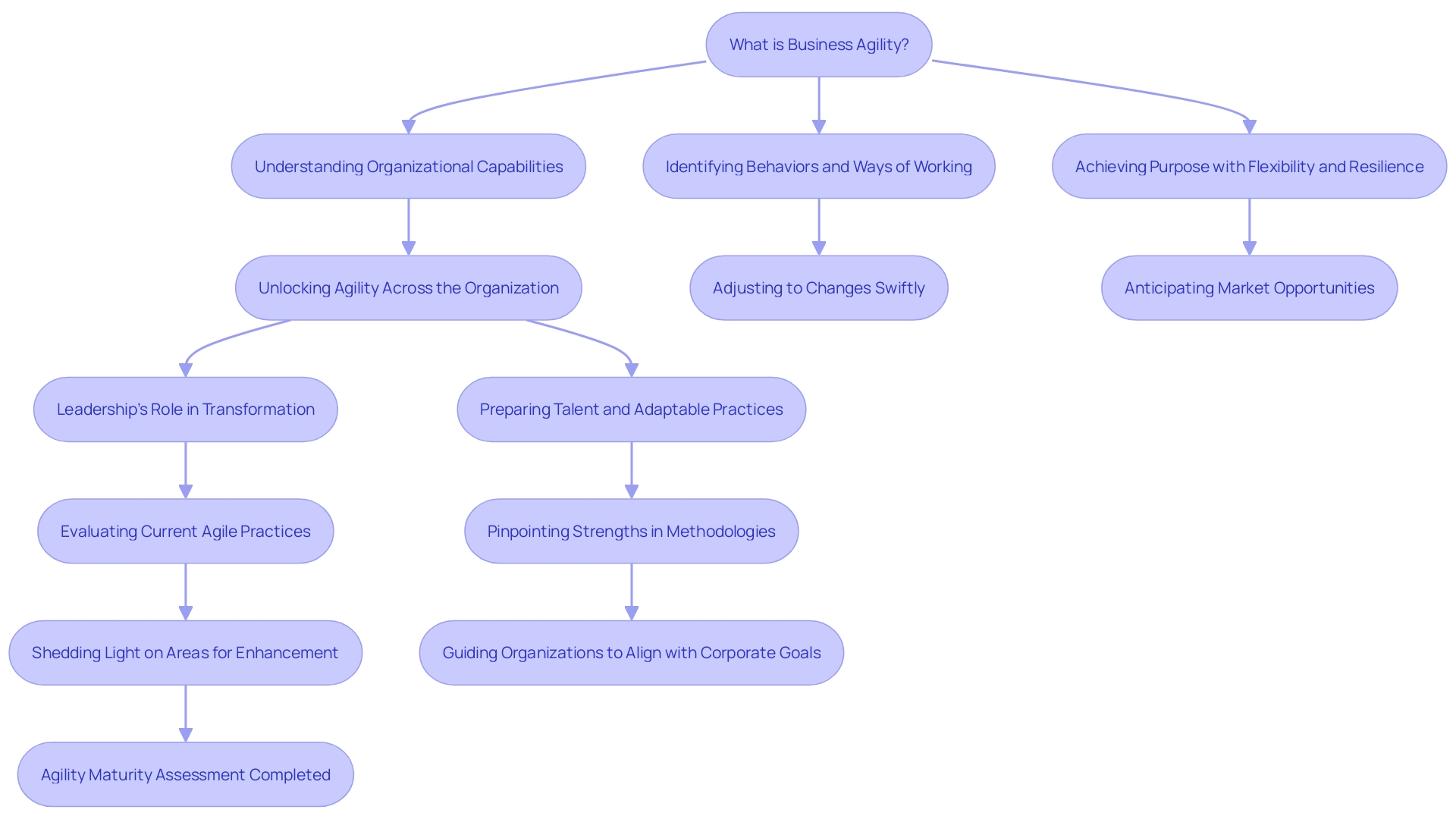
Common Agile Maturity Models
Organizations looking to improve their flexibility often rely on maturity models as tools for self-assessment and enhancement. These models act as guides to measure the effectiveness of methodologies, offering a systematic approach to recognize areas of proficiency and possibilities for development. In particular, they are valuable in facilitating the transformation from traditional, rigid structures to environments characterized by flexible, continuous delivery of value.
One convincing instance of transformation is TBC Bank, the leading financial institution in Georgia. TBC Bank has embraced the mission to simplify the lives of its customers and employees. This is evident in their commitment to accelerating the time-to-market of digital products and services, thereby delivering an exceptional banking experience.
The implementation of flexible methodologies differs among organizations and doesn't always adhere to standard models of innovation adoption. Some organizations may experience distinctive patterns in their progression toward flexibility maturity, which can be more precisely grasped through the lens of the Rogers Innovation Diffusion Curve—a model that clarifies how new ideas and technologies spread throughout a society or marketplace.
In practice, flexible methodologies are not confined to the realm of IT and software development. Their broad appeal lies in the principles that allow various industries to tackle complex systems and processes. For example, healthcare organizations may utilize the iterative approach to improve the quality of patient care and lower operational expenses, while financial institutions can implement Agile principles to strengthen risk management and compliance.
The convergence of other methodologies like DevOps with other methodologies like DevOps also merits attention. DevOps aims to promote cooperation between software developers and IT operations, while emphasizing the enhancement of development cycles' effectiveness. Despite their differences, both methodologies share several similarities that enable them to work hand-in-hand, resulting in a more robust approach to project management.
Nevertheless, the journey towards becoming more adaptable has its obstacles. A staggering 81% of business decision-makers in the UK and 89% in the US express concerns regarding the timely delivery of software projects. This concern underscores the importance of not only refining the software testing phase but also examining the software engineering process from inception to deployment.
In summary, maturity models for Agile are not one-size-fits-all solutions but rather provide a framework for entities to chart their unique paths toward excellence in Agile. By comprehending and implementing these models, entities can more effectively navigate the complexities of their specific environments and promote a culture of continuous improvement.
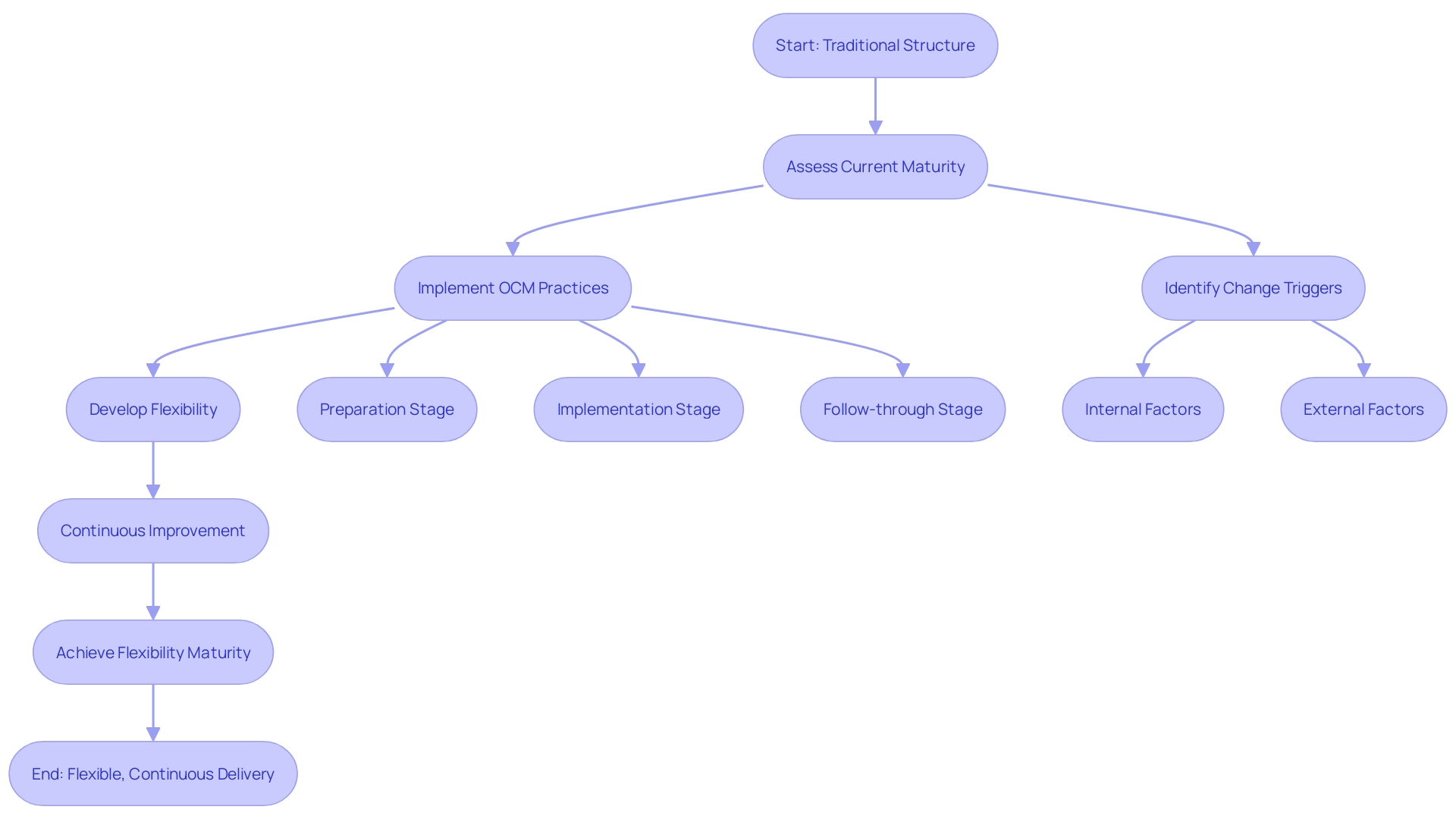
Implementing Continuous Improvement
The incorporation of the ADKAR Change Management Framework into a company's transformation is crucial for guaranteeing that the enhancements identified through the Maturity Assessment are systematically executed. The ADKAR model focuses on five core elements – Awareness, Desire, Knowledge, Ability, and Reinforcement – that guide organizations through the change process effectively.
Flexible methodologies are naturally designed to embrace change, and businesses globally have been leveraging this adaptability to stay competitive. For instance, TBC Bank has structured its mission around simplifying the lives of its customers through quicker digital product delivery. Similarly, M&T Bank has established Clean Code standards to ensure software quality remains high amidst their digital transformation journey. These examples emphasize the significance of upholding high standards in technology and the role of flexible principles in attaining them.
Maintaining a dynamic and responsive approach to business is crucial, as outlined by the Business Agility Institute®. Business Agility is about having the organizational capabilities and ways of working that afford businesses the resilience and flexibility to fulfill their purpose, despite the uncertainties of the future. As echoed by Ewerton Santos, leadership, talent preparation, and adaptable practices are paramount in realizing Business Agility.
The journey towards maturity is not a linear path, as evidenced by the non-traditional adoption patterns observed by seasoned practitioners. This reinforces the necessity of continuous improvement strategies post-assessment. By utilizing the ADKAR model, companies can methodically tackle the areas identified in the Maturity Assessment for Agility, guaranteeing that change initiatives are not only executed but also maintained.
In the domain of software development, the implementation of flexible methodologies has been influential in reducing burnout and boreout among developers by encouraging a sustainable work pace and visualizing knowledge work through Product Backlog Items (PBIS). This method is in line with the ADKAR model's focus on empowering individuals with the understanding and capability to adjust to adaptable practices, thus strengthening continuous improvement as a cultural norm within the company.
To encapsulate, the adoption of the ADKAR framework in the wake of an Agile Maturity Assessment can significantly bolster an organization's ability to implement and sustain continuous improvement. This, in turn, enables businesses to not only adapt to market changes with agility but also to thrive amidst them.
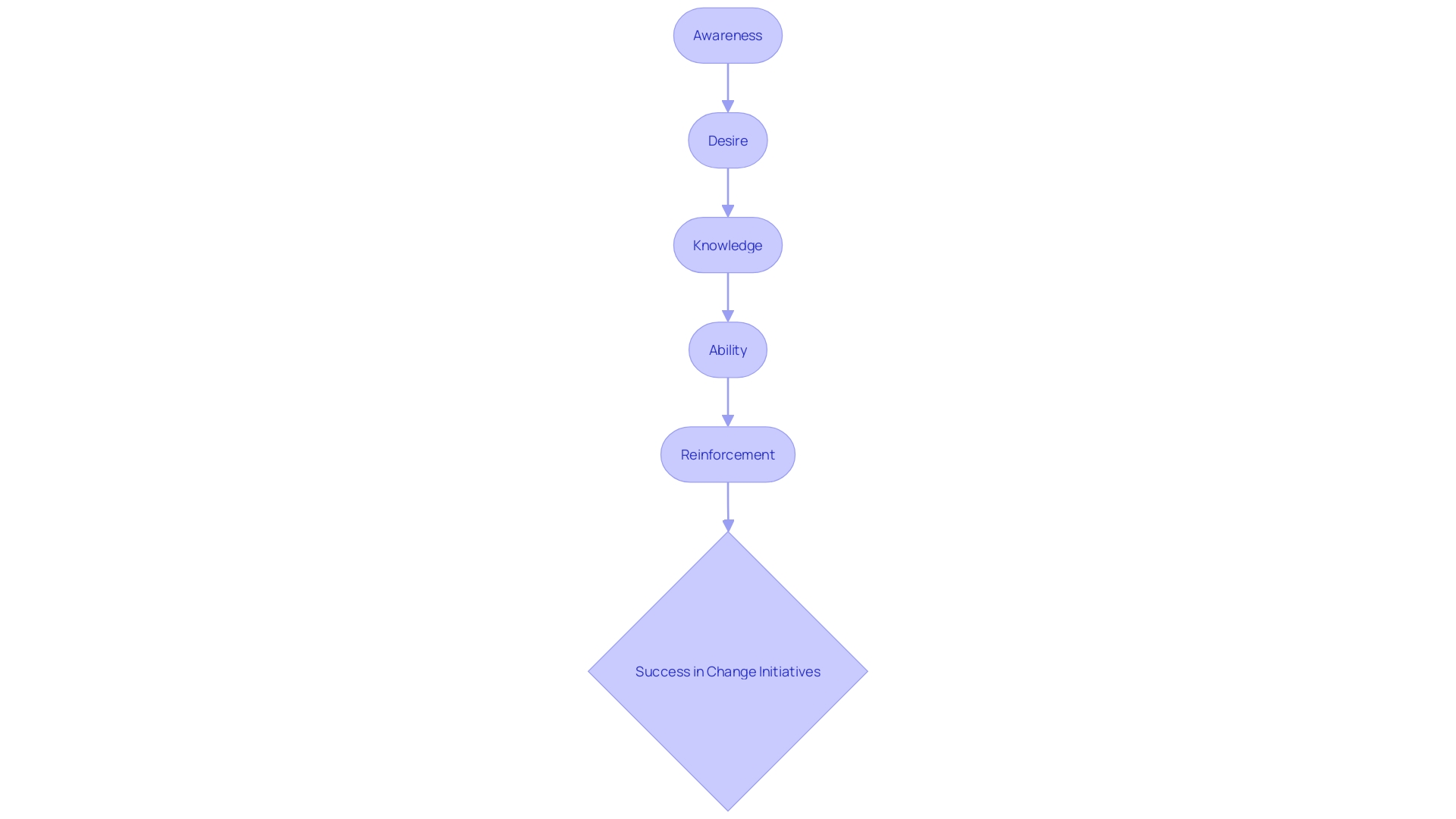
Conclusion
Agile maturity assessments are essential for organizations to evaluate their current Agile practices and identify areas for improvement. These assessments focus on key areas like leadership, collaboration, process efficiency, and continuous improvement. By analyzing these components, organizations can gain insights into their Agile maturity and develop actionable strategies for growth.
Conducting an Agile maturity assessment involves considering the organizational culture, readiness to adapt, and collaboration between developers and business executives. It requires collecting and analyzing data to inform improvement strategies. The assessment process should be tailored to the organization's unique dynamics.
Executing Agile maturity assessments effectively requires a standardized approach, stakeholder involvement, and a culture of continuous improvement. Inclusion of key stakeholders aligns the assessment with organizational goals and encourages buy-in at all levels. Fostering a culture of continuous improvement is crucial for refining Agile practices over time.
Agile maturity assessments offer numerous benefits to organizations. They serve as compasses, identifying strengths and areas for improvement in Agile methodologies. These assessments enable organizations to align their Agile practices with corporate objectives and drive organizational change.
Common Agile maturity models provide frameworks for self-assessment and improvement.
Implementing continuous improvement is vital for sustaining Agile maturity. The integration of the ADKAR Change Management Framework helps organizations systematically implement improvements identified through Agile maturity assessments. The ADKAR model guides organizations through the change process effectively.
In conclusion, Agile maturity assessments are vital for organizations to enhance their Agile practices. By embracing Agile maturity, organizations can thrive in today's dynamic marketplace and stay competitive amidst continuous change.




